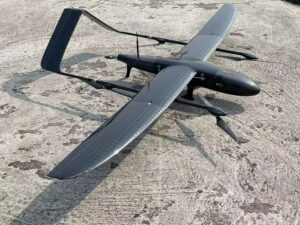
The drone industry is undergoing a remarkable transformation, driven by advancements in energy management systems (EMS). At the forefront of this revolution is Airober, a pioneering company that is redefining the possibilities of drone performance with its cutting-edge Hydrogen EMS technology. This innovative solution is set to enhance drone capacity, endurance, and overall efficiency, making it a game-changer for various industries reliant on drone technology.
The Need for Advanced Energy Management
Drones have become indispensable tools across diverse sectors, including agriculture, surveillance, logistics, and environmental monitoring. However, the limitations of conventional battery-powered drones, particularly their limited flight time and payload capacity, have been significant hurdles. Airober’s Hydrogen EMS offers a revolutionary solution to these challenges by leveraging the power of hydrogen fuel cells to deliver superior energy efficiency and extended operational capabilities.
How Hydrogen EMS Works
Airober’s Hydrogen EMS utilizes hydrogen fuel cells as a primary power source for drones. These fuel cells generate electricity through an electrochemical reaction between hydrogen and oxygen, producing only water and heat as byproducts. This process ensures a clean, sustainable, and highly efficient energy supply. The key components of Airober’s Hydrogen EMS include:
- Hydrogen Storage System: Compact and lightweight hydrogen storage tanks ensure a steady supply of hydrogen gas, enabling longer flight durations without significantly increasing the drone’s weight.
- Fuel Cell Stack: The fuel cell stack efficiently converts hydrogen into electrical energy, providing a consistent power output to the drone’s motors and onboard systems.
- Power Management Module: This intelligent module optimizes power distribution, ensuring that energy is delivered precisely where and when it’s needed, enhancing overall drone performance and efficiency.
Advantages of Airober’s Hydrogen EMS
The integration of Airober’s Hydrogen EMS into drones offers numerous advantages that address the limitations of traditional battery-powered systems:
- Extended Flight Time: Hydrogen fuel cells provide a higher energy density compared to lithium-ion batteries, allowing drones to fly for significantly longer periods without the need for frequent recharging or battery swaps.
- Increased Payload Capacity: With a more efficient energy source, drones can carry heavier payloads, making them suitable for a wider range of applications, from industrial inspections to medical supply deliveries.
- Eco-Friendly Operation: Hydrogen fuel cells produce zero emissions, contributing to a cleaner environment and aligning with global sustainability goals.
- Rapid Refueling: Unlike batteries that require lengthy recharging times, hydrogen tanks can be quickly refilled, minimizing downtime and maximizing operational efficiency.
- Enhanced Reliability: Airober’s Hydrogen EMS is designed for robustness and reliability, ensuring consistent performance even in challenging conditions.
Applications Across Industries
Airober’s Hydrogen EMS is poised to revolutionize various industries by unlocking new capabilities for drones:
- Agriculture: Drones equipped with Hydrogen EMS can cover larger areas for crop monitoring, pest control, and precision agriculture, leading to increased yields and reduced resource usage.
- Logistics: The extended flight time and payload capacity enable drones to transport goods over longer distances, enhancing last-mile delivery services and reducing reliance on traditional transportation methods.
- Surveillance and Security: Law enforcement and security agencies can benefit from prolonged aerial surveillance capabilities, improving situational awareness and response times.
- Environmental Monitoring: Drones with Hydrogen EMS can conduct extended missions for monitoring wildlife, assessing environmental changes, and collecting critical data for research and conservation efforts.

The Future of Drone Technology
Airober’s commitment to innovation and sustainability is driving the evolution of drone technology. By harnessing the power of hydrogen, Airober’s Hydrogen EMS is not only addressing the limitations of current drone systems but also paving the way for new possibilities and applications. As industries continue to embrace drone technology, Airober’s Hydrogen EMS stands as a testament to the potential of clean, efficient, and high-performance energy solutions.
In conclusion, Airober’s Hydrogen EMS represents a significant leap forward in the drone industry, offering unparalleled advantages in flight time, payload capacity, and environmental sustainability. With its innovative approach to energy management, Airober is setting new standards for what drones can achieve, opening up a world of opportunities for industries and applications that rely on these versatile and powerful aerial tools.


Leave a Reply